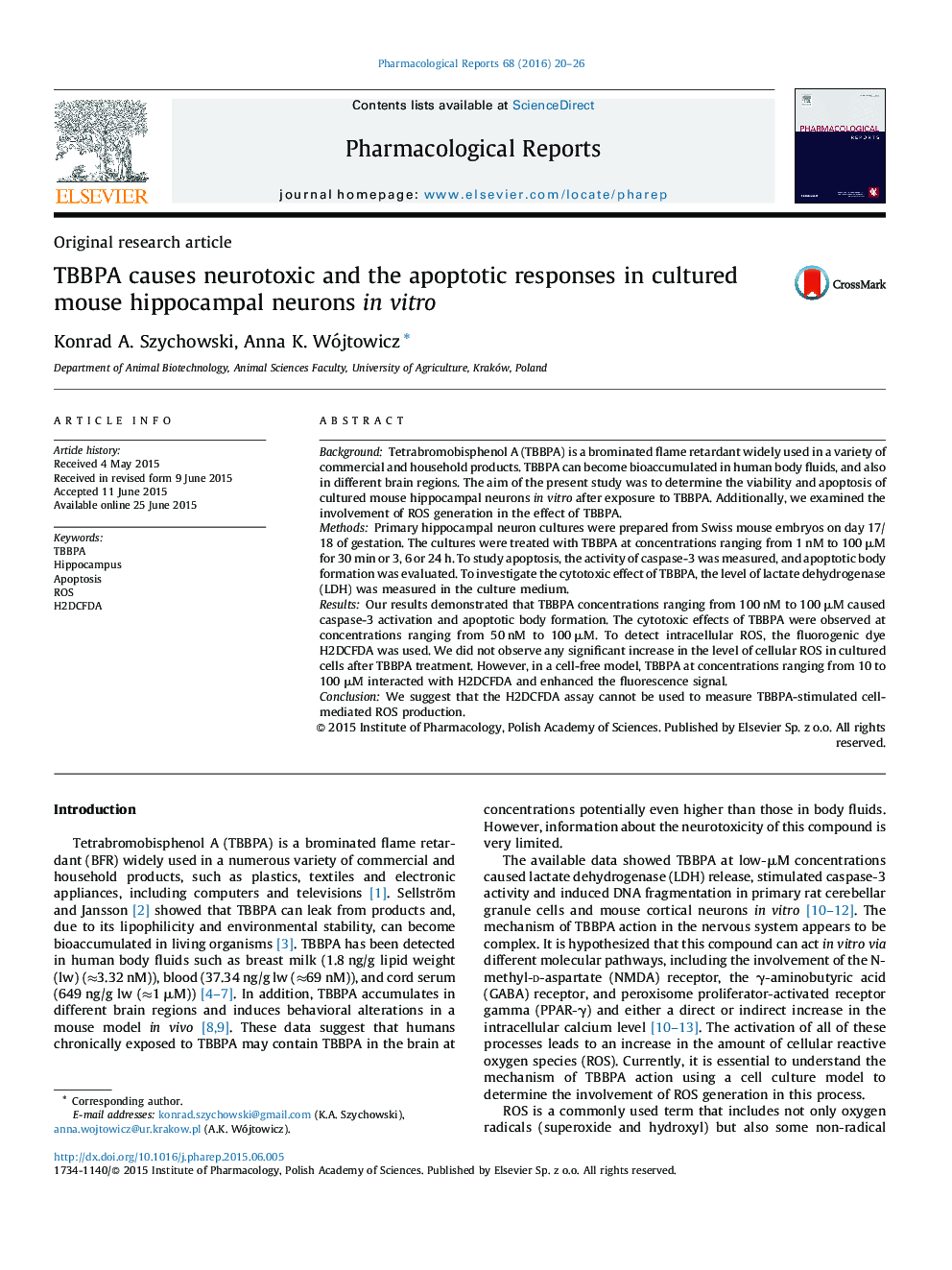| کد مقاله | کد نشریه | سال انتشار | مقاله انگلیسی | نسخه تمام متن |
|---|---|---|---|---|
| 2010393 | 1066973 | 2016 | 7 صفحه PDF | دانلود رایگان |
BackgroundTetrabromobisphenol A (TBBPA) is a brominated flame retardant widely used in a variety of commercial and household products. TBBPA can become bioaccumulated in human body fluids, and also in different brain regions. The aim of the present study was to determine the viability and apoptosis of cultured mouse hippocampal neurons in vitro after exposure to TBBPA. Additionally, we examined the involvement of ROS generation in the effect of TBBPA.MethodsPrimary hippocampal neuron cultures were prepared from Swiss mouse embryos on day 17/18 of gestation. The cultures were treated with TBBPA at concentrations ranging from 1 nM to 100 μM for 30 min or 3, 6 or 24 h. To study apoptosis, the activity of caspase-3 was measured, and apoptotic body formation was evaluated. To investigate the cytotoxic effect of TBBPA, the level of lactate dehydrogenase (LDH) was measured in the culture medium.ResultsOur results demonstrated that TBBPA concentrations ranging from 100 nM to 100 μM caused caspase-3 activation and apoptotic body formation. The cytotoxic effects of TBBPA were observed at concentrations ranging from 50 nM to 100 μM. To detect intracellular ROS, the fluorogenic dye H2DCFDA was used. We did not observe any significant increase in the level of cellular ROS in cultured cells after TBBPA treatment. However, in a cell-free model, TBBPA at concentrations ranging from 10 to 100 μM interacted with H2DCFDA and enhanced the fluorescence signal.ConclusionWe suggest that the H2DCFDA assay cannot be used to measure TBBPA-stimulated cell-mediated ROS production.
Journal: Pharmacological Reports - Volume 68, Issue 1, February 2016, Pages 20–26
